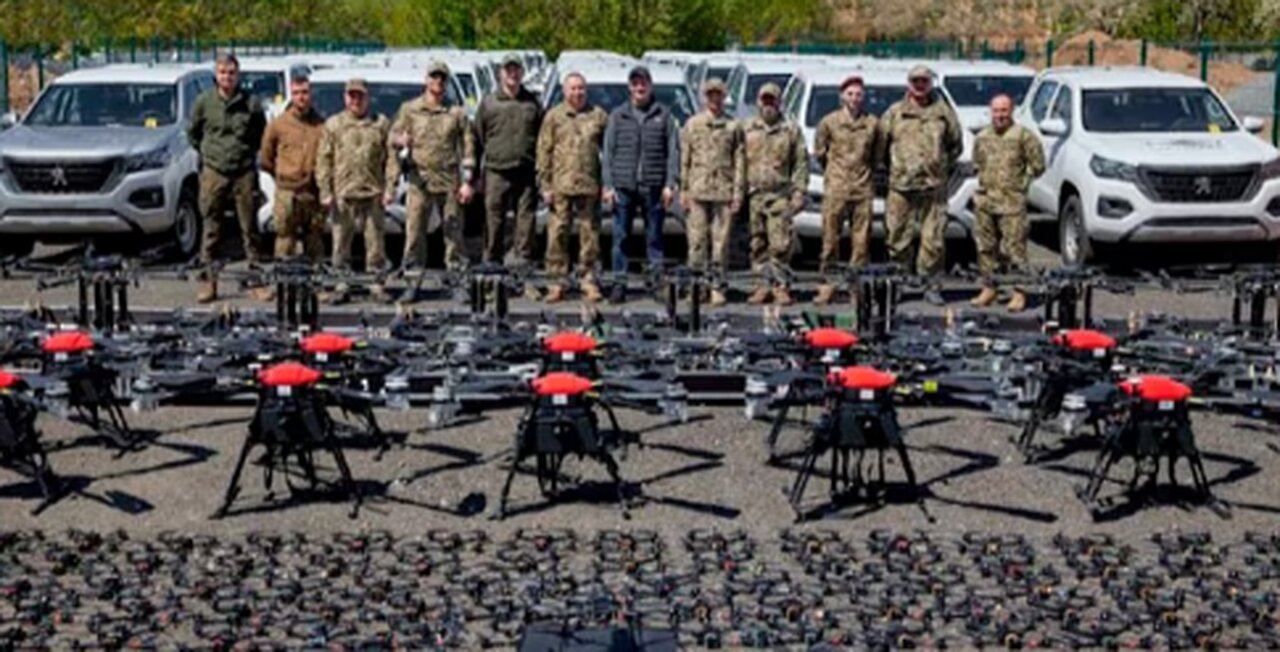Premium Only Content

To defend itself against Moscow_s aggression, the West must invest billions in weapons industry
With Ukraine’s prospects of joining NATO slim, the country’s Western allies have bought into an alternative strategy to deter Russia now and in the future: investing billions in Ukraine’s growing and highly valued arms industry so it can better defend itself against Moscow’s aggression, and eventually sharing advanced drones, missiles and other military technology with Europe and the United States. According to the Associated Press, one recent development in Ukraine’s domestic arsenal is a quadcopter drone that can evade Russian jamming devices, fly more than 20 kilometers and drop six kilograms of guided explosives on tanks and other high-value targets. Russian soldiers call it “Baba Yaga,” after a witch from Slavic folk tales who kidnaps children; its Ukrainian developer calls it the R-34 and says it hits as accurately as a sniper rifle. Europeans have begun to take the threat from Russia more seriously since the second Trump administration began signaling that NATO members should not overly rely on the United States for their defense. Concerns across Europe grew last week after Russian drones launched from Belarus violated Polish and Romanian airspace before being shot down. For its part, Ukraine is actively seeking investment to triple its weapons production, become less dependent on Western partners in the war against Russia — and hopefully deter future conflicts. Almost 60% of the weapons supplies for the Ukrainian army are produced domestically, about 35 times more than at the start of the full-scale invasion, Defense Minister Denys Shmyhal said in July. Plans are underway to further expand this sector, and some sophisticated weapons, including U.S. Patriot defense systems, are still in demand among allies. Ukraine’s military spending — about $64 billion in 2024 — is just 43 percent of Russia’s spending that year. U.S. Ambassador Keith Kellogg said Saturday that Ukraine has become a “world leader” in defense technology and that the United States is “far behind” Kyiv in developing drones. In addition to any private investment and instead of NATO membership, Ukraine’s security guarantees are likely to focus on European governments investing in its military — essentially paying Kyiv to build its own weapons and filling production gaps through mutually beneficial joint ventures. For both sides, the war has required rapid innovation cycles as a matter of survival. How quickly weapons can be developed, delivered to military units, and improved is a matter of life and death. Like most defense companies in Ukraine, FRDM, the manufacturer of the P-34, communicates with soldiers around the clock and is quick to take feedback into account. Its founder, Vadym Yunyk, is guided by the motto: robots should die on the front lines, not people. “There are currently no drones that we know of that can withstand electronic warfare and fly this far. That’s why it’s unique,” said one of the drone engineers at FRDM Group, who spoke on condition of anonymity for security reasons. It underscores one of Ukraine’s weaknesses in the war: a lack of human resources, which has been a key driver of innovation for Ukrainian defense companies. According to Ukrainian officials, small Ukrainian first-person view (FPV) drones are responsible for almost 70 percent of Russia’s losses in manpower and weapons within 15 kilometers of the front line. At the other end of the spectrum are its deep-strike drones, which can reach more than 1,000 kilometers to hit targets deep inside Russian territory. FRDM quadcopter
-
 1:13:11
1:13:11
Chad Prather
18 hours agoGratitude That Grows in Hard Ground: A Thanksgiving Message for the Soul
68.4K40 -
 LIVE
LIVE
LFA TV
14 hours agoLIVE & BREAKING NEWS! | WEDNESDAY 11/26/25
3,987 watching -
 1:59:03
1:59:03
The Chris Salcedo Show
14 hours ago $10.16 earnedRemembering Rush On A Truly American Holiday
30.9K2 -
 36:24
36:24
Julie Green Ministries
5 hours agoLIVE WITH JULIE
102K214 -
 1:05:27
1:05:27
Crypto Power Hour
13 hours ago $9.26 earnedWhat You Need To Know About Gold Tokenization
66.9K7 -
 1:46:14
1:46:14
LIVE WITH CHRIS'WORLD
14 hours agoTHE WAKE UP CALL - 11/26/2025 - Episode 14
30.8K2 -
 2:16:19
2:16:19
The Bold Lib
17 hours agoBOLDCHAT: Trump Pardons | DOGE | Patel w/ANGELA BELCAMINO
40.8K6 -
 47:14
47:14
Brad Owen Poker
1 day ago $2.71 earnedI Have STRAIGHT FLUSH vs Flopped NUTS!! ALL IN w GOLD BRACELET LEGEND!! $15,000+! Poker Vlog EP 358
28.1K -
 36:11
36:11
Uncommon Sense In Current Times
20 hours ago $7.20 earnedThe Truth About the Abortion Pill | Sue Liebel Exposes FDA Failures & Hidden Dangers
41K2 -
 2:05:12
2:05:12
BEK TV
1 day agoTrent Loos in the Morning - 11/26/2025
24.7K